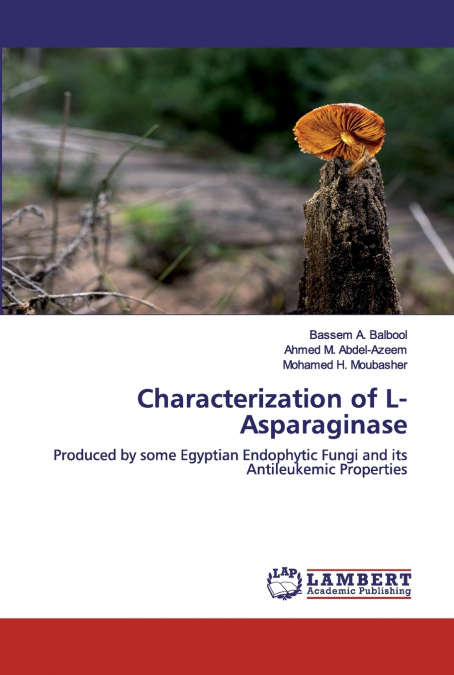
Ahmed M. Abdel-Azeem / Ahmed MAbdel-Azeem / Bassem A. Balbool / Bassem ABalbool / Mohamed H. Moubasher / Mohamed HMoubasher
 Donde los libros
Donde los libros
 Librería 7artes
Librería 7artes
 Librería Elías (Asturias)
Librería Elías (Asturias)
 Librería Kolima (Madrid)
Librería Kolima (Madrid)
 Librería Proteo (Málaga)
Librería Proteo (Málaga)
The presented study aims to the screening of the endophytic fungi associated with Saint Katherine plants to produce L-asparaginase enzyme. Twenty-five endophytic fungal species were isolated and identified from a twenty-three-plant species using surface sterilization techniques. Plant species were collected from nine wadis over Saint Katherine protectorate (SKP), during the period of 2015-2017` with a total count of 4466 CFU. Five species with nine morphotypes showed L-asparaginase activity ranging from 44.5 (±1.66) to 152.58 (±0.63) U/ml. Lasiodiplodia theobromae recoded the highest activity with 152.58 U/ml. L-asparaginase was induced with an activity of 315 U/ml. L¬-asparaginase was purified with a specific activity of 468.03 U/mg and a total activity of 84.4 U/ml. Purified L-asparaginase showed an approximate size of 70 kDa. Purified enzyme was characterized chemically. Purified L-asparaginase showed an IC50 of 35.2±0.7 U/ml with leukemic M-NFS-60 cell lines and CC50 of 79.4±1.9 U/ml with normal WI-38 cell line. The presented study suggests the use of endophytic fungi as a sustainable source for L-asparaginase production.